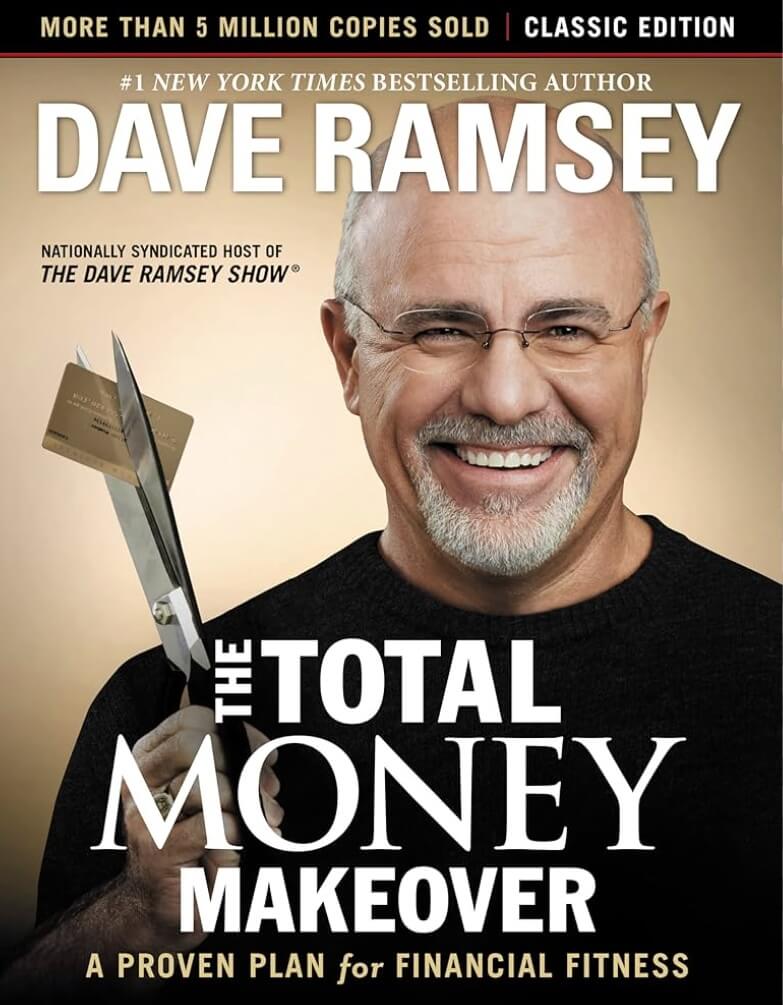If you’ve ever stared down a mountain of debt, felt overwhelmed by your bank balance, or been tempted by yet another money hack on social media, you’ve probably encountered The Total Money Makeover. Dave Ramsey’s best-selling financial guide has become a modern classic for people looking to take control of their money.
But does this book truly deliver a “proven plan” for financial fitness? Or is it a rigid formula that oversimplifies complex realities? Let’s dig in.
📚 Why This Book Matters to the Financially Frustrated
Ramsey’s appeal is rooted in his tone — stern, evangelical, but undeniably motivational. His “Baby Steps” promise an easy-to-follow structure: start with saving $1,000, pay off debt using the “debt snowball,” build an emergency fund, and eventually invest and give generously.
This direct, structured plan is what many readers need, especially those feeling stuck or paralyzed by their financial situation. The book is peppered with testimonials of people paying off tens (or hundreds) of thousands in debt — often screaming “I’M DEBT-FREE!” on Ramsey’s radio show.
If you need clarity, structure, and a bit of financial fire-and-brimstone preaching to kickstart your journey, this book might be the exact shock to the system you need.
🧱 The Core of the Makeover: Simplicity Over Subtlety
The brilliance of Ramsey’s system is its simplicity. He avoids jargon, doesn’t dwell on investment vehicles, and tells you exactly what to do:
⦁ Don’t invest until you’re debt-free.
⦁ Don’t use credit cards — ever.
⦁ Pay off your smallest debt first, regardless of interest rate.
⦁ Avoid debt like it’s a venomous snake.
There’s power in this kind of clarity, especially for people drowning in complexity or shame about their financial habits.
But that same simplicity is also where the book begins to show cracks.
🤨 Where It Falls Short — Oversimplification and Rigidity
Ramsey is often at his best when he’s inspiring people to act. But when it comes to tailoring advice to different life circumstances, his approach becomes dogmatic. There’s little room in The Total Money Makeover for nuance or exceptions.
❌ The Anti-Credit Card Crusade
Ramsey’s complete rejection of credit cards might help people who’ve struggled with overspending — but it also ignores the practical benefits of responsible credit use, like travel rewards, consumer protection, and credit score building.
For readers with financial discipline, his strict anti-credit stance can feel out of touch with modern financial tools.
❌ The Debt Snowball Problem
The “debt snowball” method prioritizes paying off the smallest debts first, ignoring interest rates. It’s a great psychological trick — but not always the most efficient financially. Ramsey argues that motivation trumps math, and while that might work for some, it might cost others hundreds or thousands in unnecessary interest payments.
❌ Missing Voices and Situations
Ramsey tends to speak to a middle-American, dual-income, suburban audience. His plan doesn’t always account for:
⦁ Single parents with unpredictable income
⦁ Those dealing with medical debt
⦁ People in high cost-of-living cities
⦁ Those with student loans in deferment or forgiveness programs
His advice sometimes assumes privilege — a stable job, a support system, or enough disposable income to aggressively pay down debt.
🧠 It’s Not Just the Math — It’s the Mindset
One of Ramsey’s strengths is that he doesn’t pretend personal finance is purely rational. He understands that money is emotional, and he positions his plan as a behavioral system, not just a spreadsheet solution.
He taps into deep anxieties and desires: the need for security, the shame of past mistakes, the dream of financial peace. This is why so many readers swear by his method. It’s not just advice — it’s therapy, coaching, and a financial altar call all rolled into one.
📰 What Online Readers Say
As with any polarizing figure, online reviews are split — but certain themes come up again and again:
⦁ “Life-changing” — Many say the book helped them break out of a cycle of debt and finally take control of their money.
⦁ “Motivational but rigid” — Even fans admit that Ramsey’s tone can be harsh and his rules inflexible.
⦁ “Great for beginners” — The consensus is that this book is best for those just starting their financial journey, not seasoned investors.
⚠️ Where It Was a Bit Challenging
- 🔁 Repetitive
The book could probably be half as long without losing its message. There’s a lot of repetition, with similar testimonials and recycled points that feel more like filler than fresh insight. - 📉 Lack of Investment Guidance
Once you’ve paid off your debt, the book gives only a cursory look at investing. Ramsey advocates for mutual funds with long-term track records — solid advice in principle, but too vague for readers seeking to understand modern investing tools like ETFs, index funds, or robo-advisors. - ✝️ Religious Undertones
Ramsey often blends biblical references and Christian values into his message. While that may resonate with many readers, others might find it alienating or out of place in a financial guide.
🏁 Final Verdict: ★★★☆☆ (3.5/5)
The Total Money Makeover is a bold, energizing kick in the pants for anyone overwhelmed by debt or stuck in financial paralysis. Ramsey’s no-excuses tone and structured plan have helped millions, and there’s no denying the effectiveness of his system — for the right person.
But for readers seeking more flexible, personalized, or modern financial advice, the book’s rigidity and black-and-white rules may feel outdated or unhelpful. If you’re looking for a motivational blueprint and don’t mind a bit of financial tough love, this book will deliver. Just don’t expect it to be the only book you’ll need.




